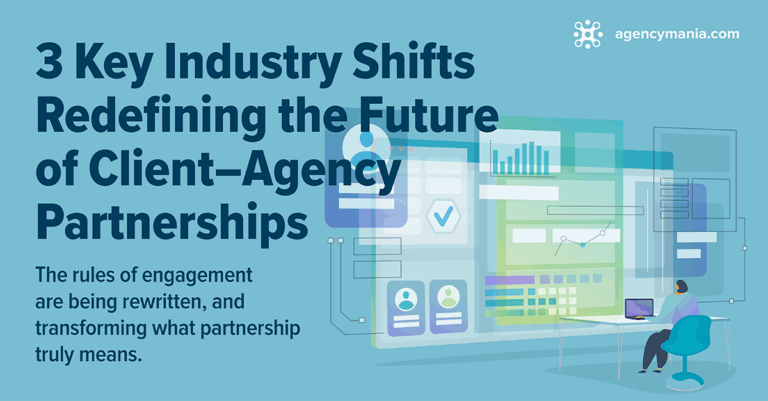Download a print-friendly version here
Your Agency Fees Are Burning Too Fast. Now What?
There are at least three million burn cases every year in the United States. Yet burns are highly preventable. In the advertising world, “burn” has a vastly different meaning, and a controlled burn is more the focus. The large majority of client/agency relationships are retainer-based agreements: the advertiser/client commits to a budget for the year that covers fees for all agency staffing resources required to deliver against an agreed scope of work. The agency tracks and regularly reports back to the client on the productive utilization of their resources, effectively known as “FTE burn” or “retainer burn.” In that context, “burn” is expected. What must be prevented however is excessive variance from the original committed budget.
Let’s take a closer look at three common scenarios brand advertisers are likely to face, and what actions they should consider taking:
Scenario 1: Burn is lower than expected
In this scenario, the agency is using fewer resources than expected. If this happens in the first half of the year, it’s quite possible than the work is back-loaded or some projects were delayed. If this is likely to change as you approach the tail end of the fiscal calendar, no immediate steps may be required. However, if the burn is low and expected to remain lower than originally estimated, then a scope of work and retainer reset may be required to realign expectations with the agency.
Suggested client corrective actions: increase scope or reduce fees. The scope can be increased by identifying new assignments, or the retainer budget can be proportionally reduced, effectively resetting the retainer to a more appropriate amount.
Scenario 2: Burn is higher than expected
In this scenario, the agency is using more resources than expected. If this happens in the first part of the fiscal calendar, it’s quite possible that the work is front-loaded or some assignments were moved up. If the forecast indicates that the burn will end on target, no action is needed, and you might in a good spot. However, if the burn is trending high and expected to remain higher than planned, then a scope of work and retainer reset may be required.
Suggested client corrective actions: reduce scope or increase budget. The scope can be reduced by eliminating a project or two (or more) that were lower priority, or the retainer can be increased by having the client add to their budget to cover the gap.
Scenario 3: Burn is on target
Good news. The agency seems to be right on track, or at least within a few percentage points from the original forecast. All set, right? Wait; not so fast.
The “FTE” burn might be on track, but if the “retainer” burn is higher, it indicates that the agency is using more senior resources than originally planned. Or the “retainer” burn might be on track, but if the “FTE” burn is higher, it means that the agency is using far more junior resources to handle the work. Even in the event where both the “FTE” and “retainer” are reported to be on track, you might not be off the hook. There is always a possibility that whatever inefficiencies may have existed in the relationship up to that point were factored in by the agency and built in to the new plan.
Suggested client corrective actions: an open conversation with the agency to understand the root causes so these findings can be incorporated into future staffing discussions. Always be on the lookout for potential inefficiencies and opportunities to right-size or ensure that team members with the right level of seniority are aligned to assignments.
Every scenario commands a separate set of recommended actions. Here are five best practices on how to make the most effective use of agency resources when reviewing burn:
1.) Clarify how “burn” will be measured and reported by the agencies (FTE and/or retainer)
Set expectations on the level of burn reporting required. The more detailed (at the project level for example, or at the staffing/functional role level), the more actionable it might be to understand where variances come from and allow for better decisions to be made. Most retainers are financial commitments that are set for the full year and get revised only on a pre-agreed schedule. This provides both predictability to the agency and process rigor in the event a change of scope is necessary. In some cases, when the year-end burn reconciliation is completed, the agreement may call for some financial adjustment (up or down) based on the final figures. A client may also choose to avoid triggering any adjustment by year end if the burn falls within an agreeable range from the target.
2.) Ask the agency for projected seasonality instead of using a flatlined forecast
The tendency is to simply flatline the projected resources throughout the fiscal calendar, allowing 25% of the retainer to be used each quarter. However, if the client provided accurate guidance about the timing of their marketing initiatives, the agency’s forecasted burn should reflect the timing of the various initiatives they will support. Naturally, when the forecast is more accurate, the burn analysis turns out to be far more actionable.
3.) Leverage QBRs to review burn reports and make corrective actions as needed
In my recent post about how to conduct QBRs, I highlighted the many aspects of the work relationship that should be front and center during these meetings between clients and agencies. Some agencies may provide monthly reporting with commentaries on any concerns they may have in addition to using QBRs, which are used for a more in-depth discussion. Reviewing agency burn data, understanding it, and collaborating with the agency to come up with adjustments is an important part of the QBR process.
4.) Set an allowable variance to determine if actions are required
Let’s be clear. If the variance is marginal in nature (less than 10% for example), there is no need to invest considerable time and effort to fix what doesn’t seem to be broken. By setting an allowable burn variance, the focus can then be on more pressing issues if the numbers fall within that target range. If you are tracking burn at the project or staff level, it may help to laser-focus any dialog on any potential outliers.
5.) Expect and share accountability for potential overage
There could be many factors contributing to excessive burn. Some of these might be client-driven: poor briefing, scope creep, unanticipated change to scope, or an excessive number of decision makers. Any of these can contribute to a much higher consumption of resources. If this is the case, the client must take full accountability and explore ways to handle these costs.
Some of the reasons for high burn might be agency-driven: off concepts and reworks, excessive turnover, lack of account management rigor, etc. In this instance, the agency must also take accountability for their role and decide which part of the burn they are willing to take on and absorb. Addressing the root causes behind any type of overage is essential to maintaining a productive partnership.
Retainer-based agreements still represent most agency contracts today. Regularly reviewing agency burn should not distract clients and agencies from delivering magnificent work. Rather, it should instill more rigor in the ongoing account management to keep client and agency expectations aligned. By giving more attention to these details, you’ll have a system for controlling the burn. Chances are that you have plenty of fires to tend already.
Download a print-friendly version here








